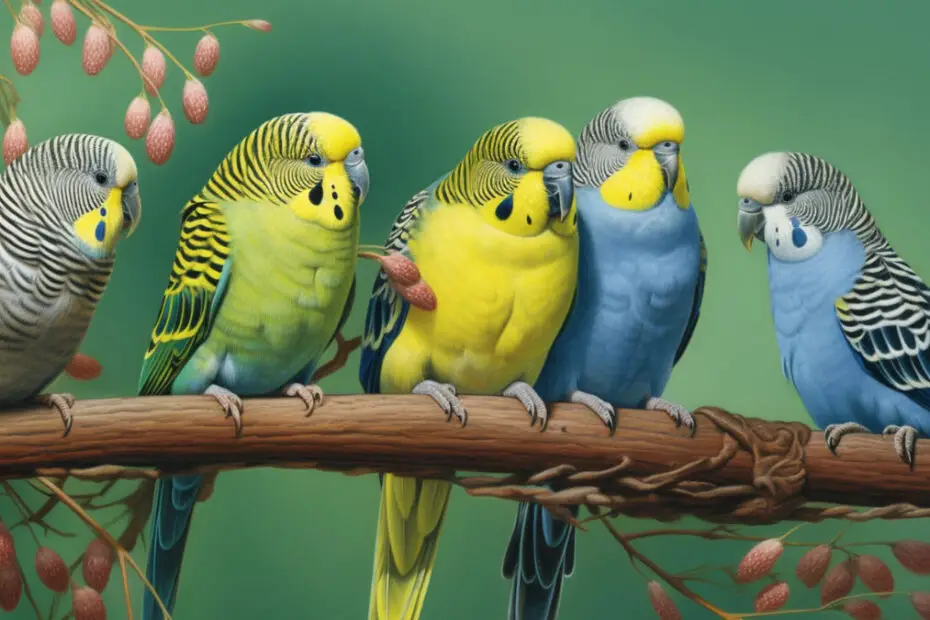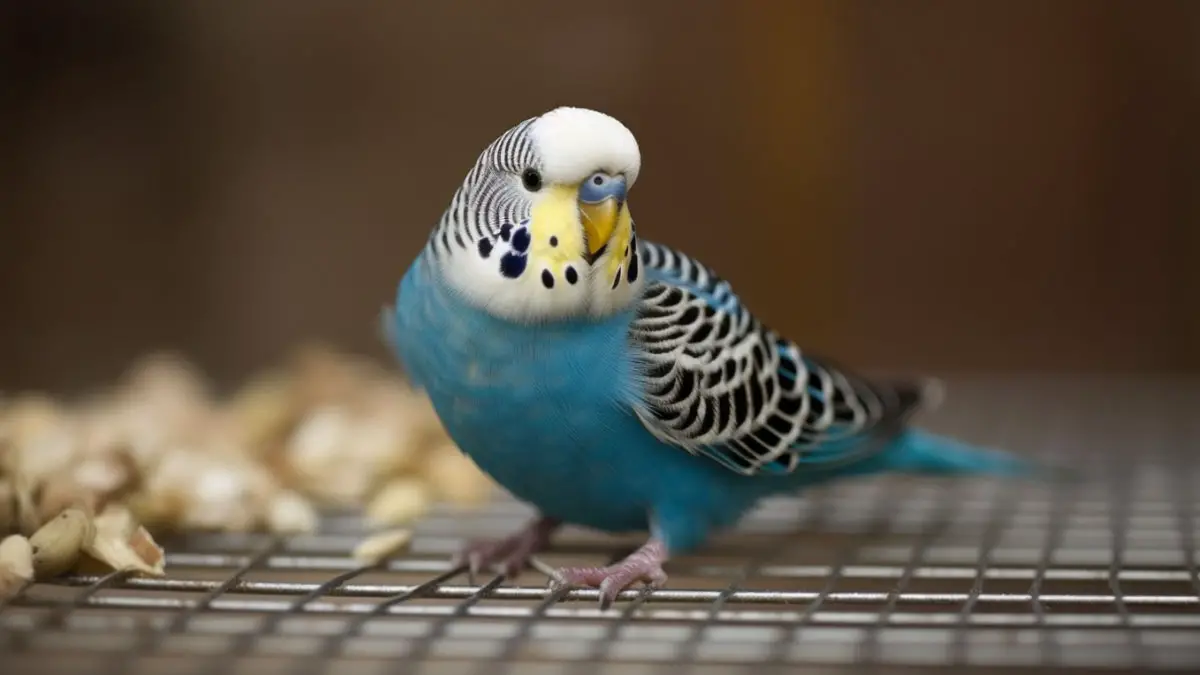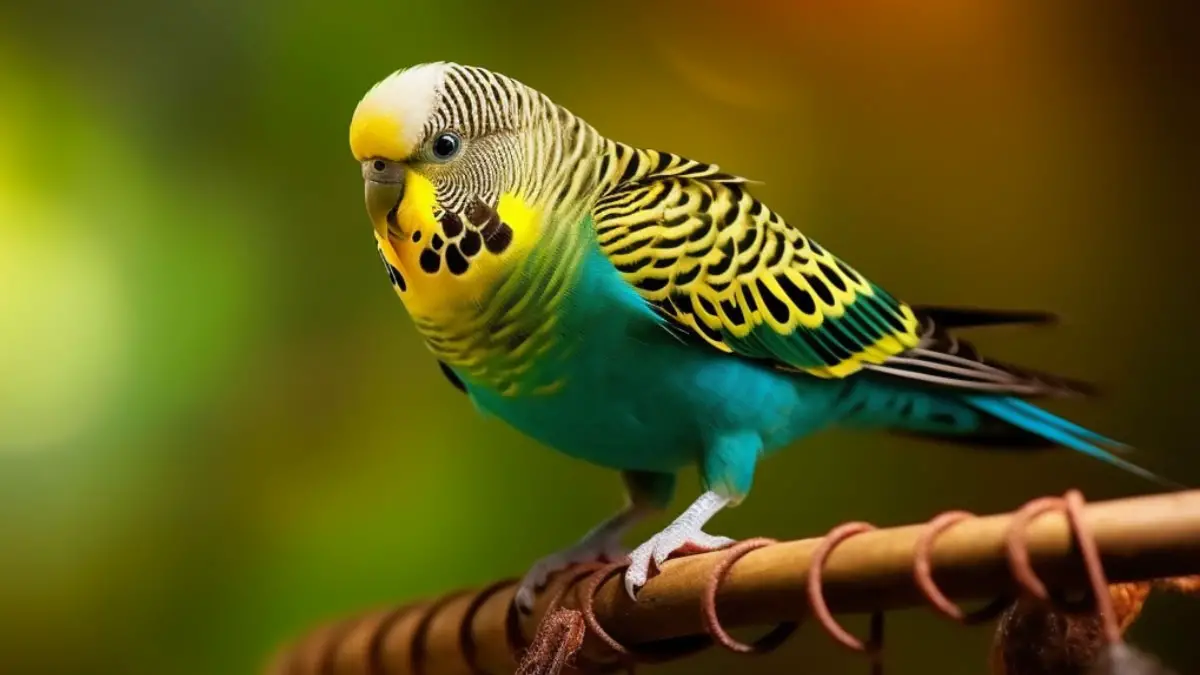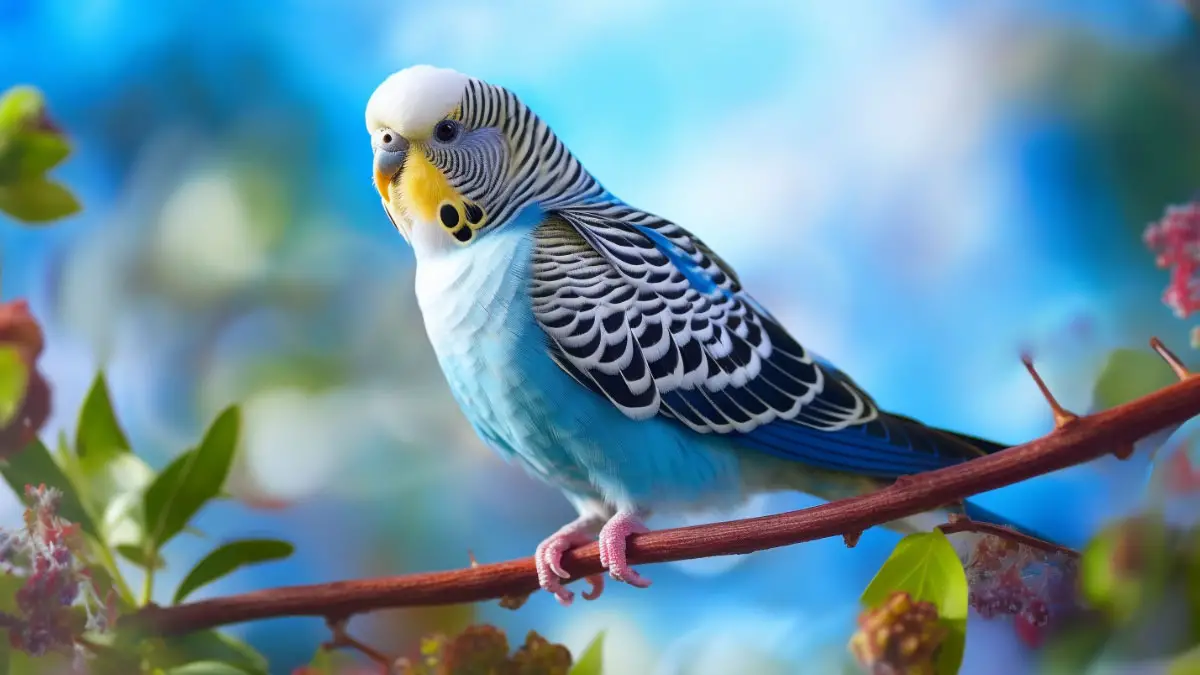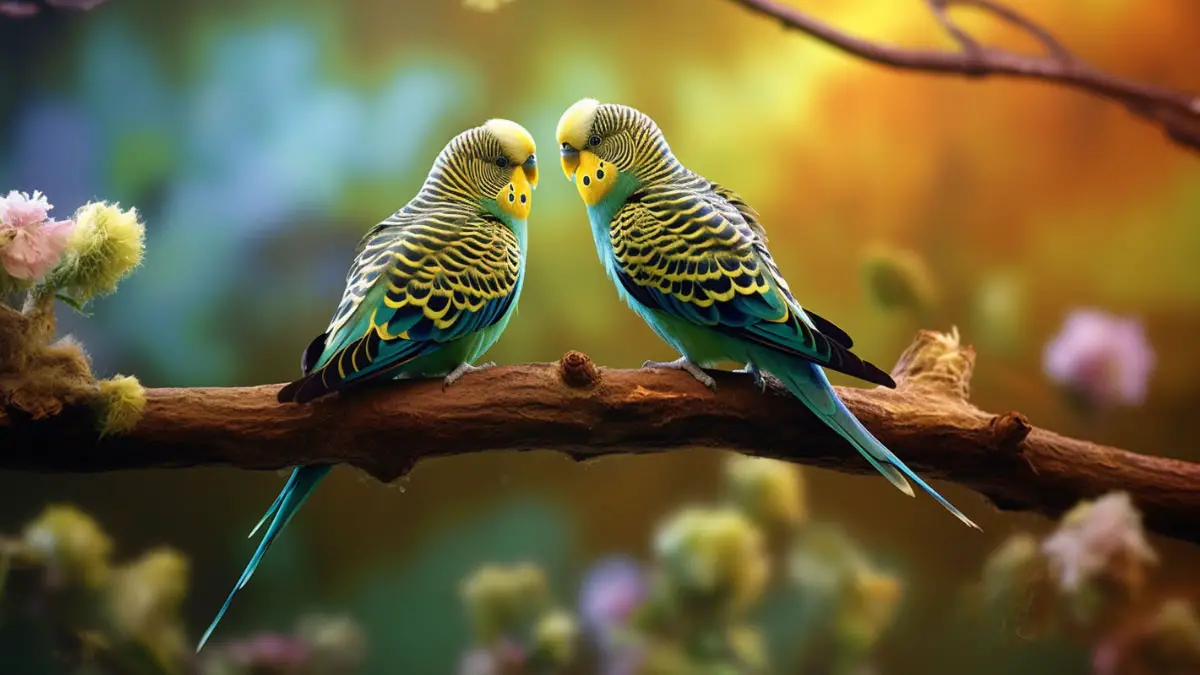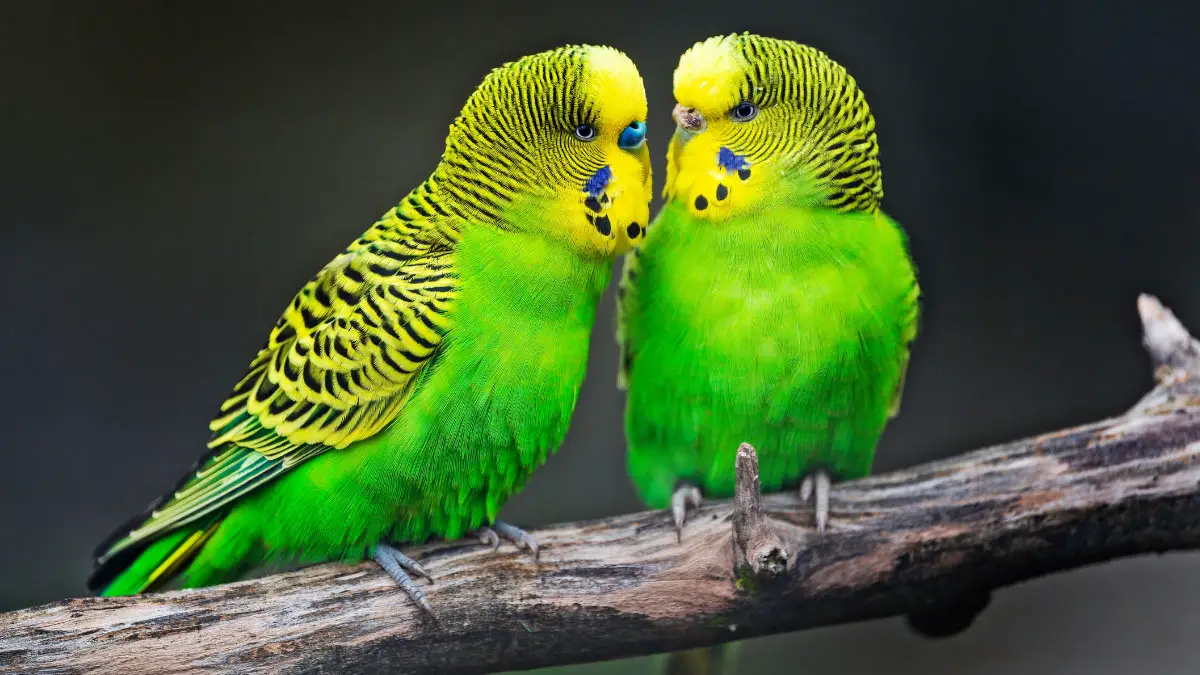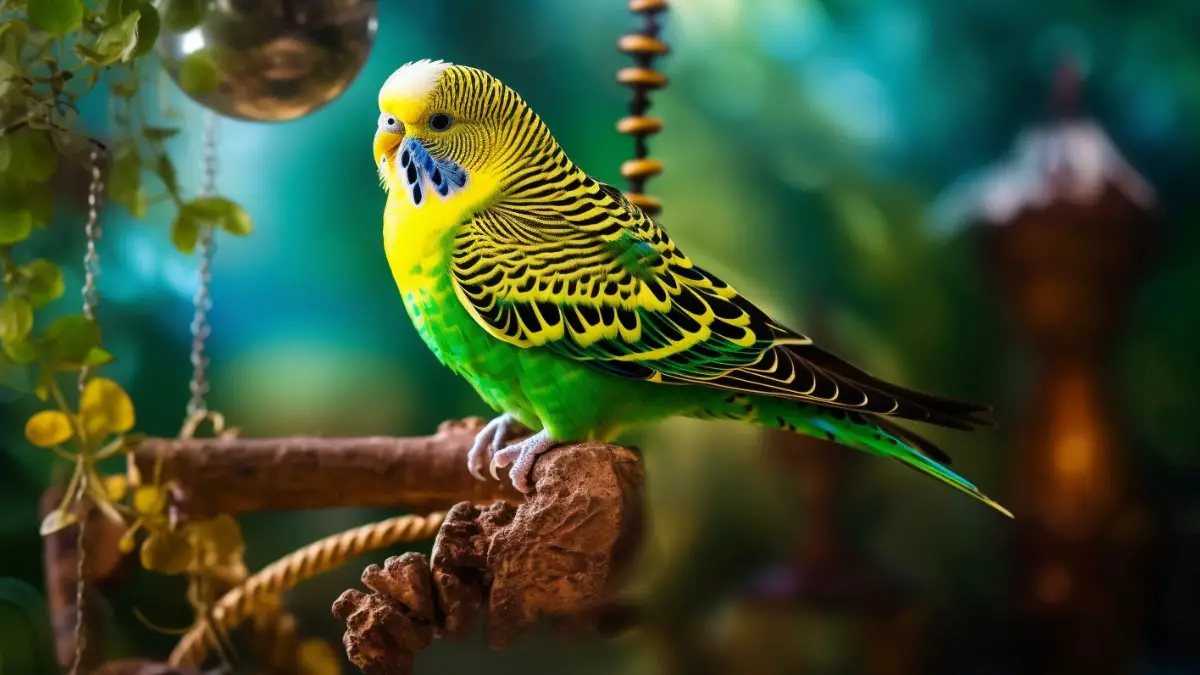Budgerigars, commonly known as budgies, are one of the most popular pet birds in the world. These small, colorful birds are known for their friendly personalities, intelligence, and ability to mimic sounds and words.
One of the most interesting aspects of budgie species is their wide variety of color mutations. The color mutations have been selectively bred over generations by bird enthusiasts and breeders.
Understanding these color mutations is crucial for both budgie breeders and owners. It can help them make proper decisions about birds to keep as pets.
In this guide, we will provide a complete list of all types of budgies color mutations, organized into different categories based on their primary color. We will also describe the characteristics of each mutation, how they are inherited and health issues related to each mutation. So, keep on reading!
Exploring Budgie Color Mutations: Our Approach
Budgerigars, also known as parakeets, come in a variety of colors. It would take a whole evening to discuss each of the parakeet mutations and their unique behavior, traits, food, and health risks. So, we’ll conceive of it as some groupings.
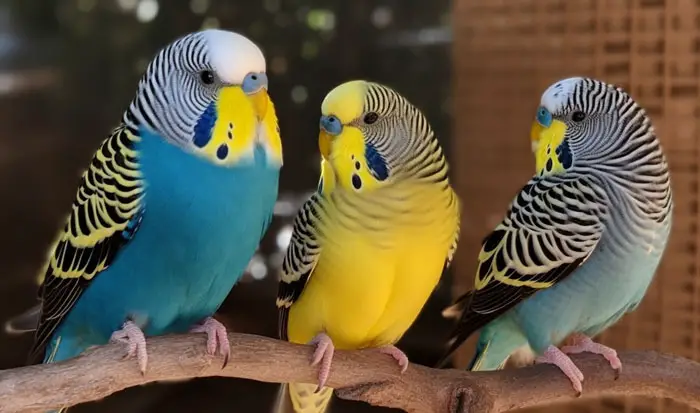
The bird colors that are quite similar and have similarities between them, will be in the same group. Based on this approach we have the following color mutation groups.
- Blue-based Mutations
- Green-based Mutations
- Yellow-based Mutations
- Grey-based Mutations
- Other Mutations
We will start in depth discussion of the groups. So, don’t keep you eyes away!
Blue-based Mutations
Blue-based mutations in budgies are a popular genetic variation. This includes cobalt, sky blue, and violet mutations. Let’s have them known based on some parameters.
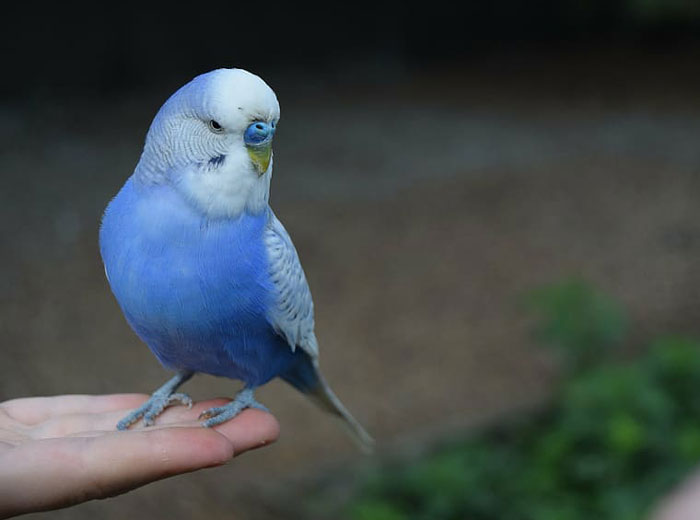
Appearance
Mutation identification relies on the appearance of the bird’s plumage.
- Cobalt budgies are characterized by a deep, rich blue coloration.
- Sky blue budgies display a lighter blue feathering contrasted with a white forehead and head stripe.
- And violet budgies, on the other hand, have a blue-violet tint across their entire body.
Inheritance of Blue-Based Mutations in Budgies
Blue-based mutations are inherited from budgie parents. These mutations are inherited in an autosomal recessive pattern. Both the bird’s parents must have the allele that causes the blue-based mutation for it to occur in their offspring here.
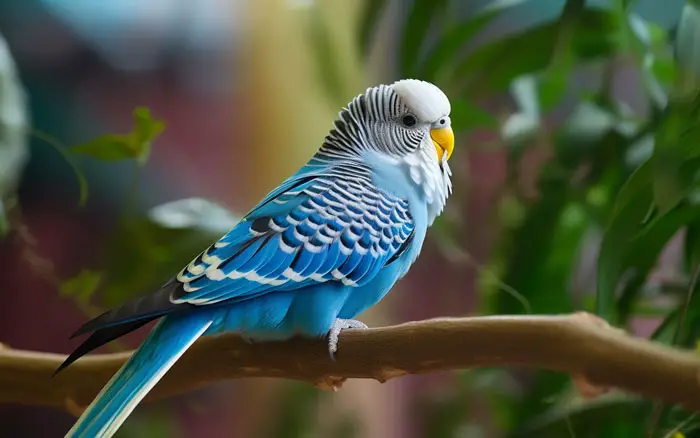
Additionally, blue-based mutations are related to sex-linked genes. The blue gene is carried on the Z chromosome, one of the two sex chromosomes that determine a bird’s sex.
This means that the inheritance of the blue mutation is dependent on the sex of the bird. Male budgies, having two Z chromosomes, have a higher chance of inheriting the blue mutation. Female budgies, having one Z and one W chromosome, tend to inherit the mutation less frequently.
Health Risks
Budgies are susceptible to various health issues and diseases, including feather cysts, French molt, and respiratory infections.
- Feather cysts are cystic growths that can appear anywhere on the bird’s body and require surgical removal.
- French molt is a viral disease that leads to abnormal feather development and can be prevented through vaccination.
- Respiratory infections in budgies can be prevented through proper ventilation, hygiene, and diet and are treated with antibiotics.
Therefore, regular check-ups and vet visits are essential to ensure the optimum health and well-being of budgies. Maintaining a balanced diet and comfortable living conditions is also crucial in preventing illnesses in budgies.
So, when purchasing a budgie, always ensure that it is from one of the reputable pet stores that have a history of healthy birds. Proper care and attention can ensure that budgies live a happy and healthy life.
Green Based Mutations
Green-based mutations in budgies are a common genetic variation. This mutation includes olive, yellowface, and Opaline mutations. Characteristics of budgie mutations are kind of the same except for the colors and body metaphor.
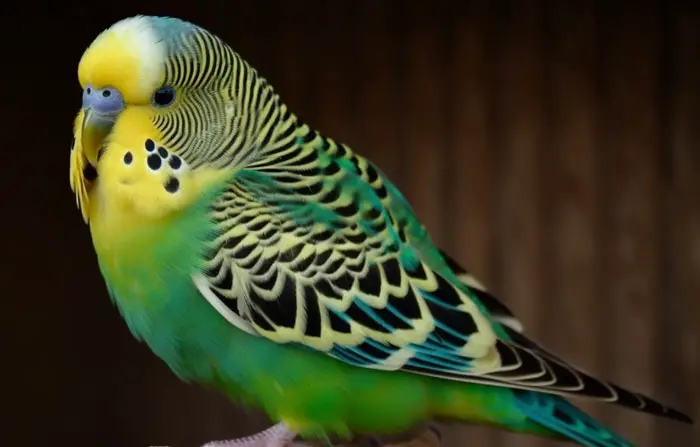
Appearance
- Olive mutation: It is a deep-green mutation, more towards brownish-green than the typical blue-green hue. Olive budgies have darker, more olive-colored feathers instead of yellow feathers.
- Yellowface mutation: This mutation is characterized by yellow coloration on the head and blue-green on the rest of the body. Yellow replaces the typical green in this mutation.
Yellowface mutations are divided into two types; type one leads to a pale yellow face coloration, while type two leads to a brighter and deeper yellow.
- Opaline mutation: This type of mutation affects both male and female budgies, and it can create a completely different body color variation that makes the bird appear pearlescent.
The feathers on the back and wings have an opalescent pearlescent sheen, which makes the bird appear striking.
Inheritance of Green-Based Mutations
Green-based mutations are inherited in a recessive pattern, similar to blue-based mutations. In this pattern, budgies must inherit two copies of the gene that causes the green mutation – one from each parent – for the mutation to be visible.
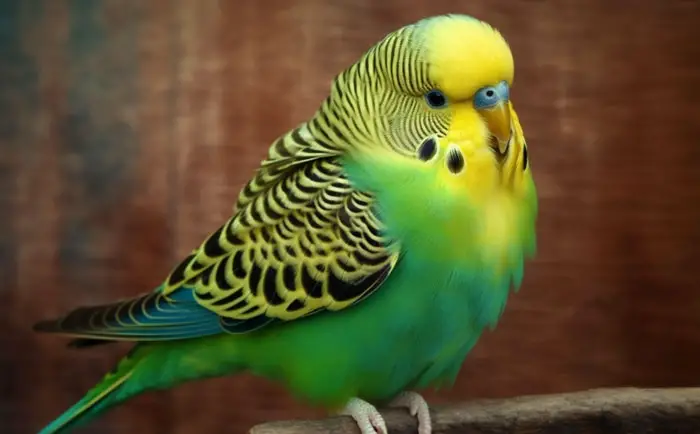
When combined with yellowface or opaline mutations, green-based mutations can produce even more variations in color and feather patterns. .
Health Risks
Budgies, including green-based mutations, are prone to several health issues, such as
- Respiratory infections
- Feather cysts
- French molt
Preventative measures such as good hygiene, proper nutrition, and regular vet check-ups can help reduce the risk of these health issues.
Yellow Based Mutations
Yellow-based mutations in bird clubs like budgies, such as lutino, albino, and fallow, are popular and beautiful traits among bird owners. The genetic variations affect the coloration of the plumage. Let us now learn about their look, ancestry, and health risks.
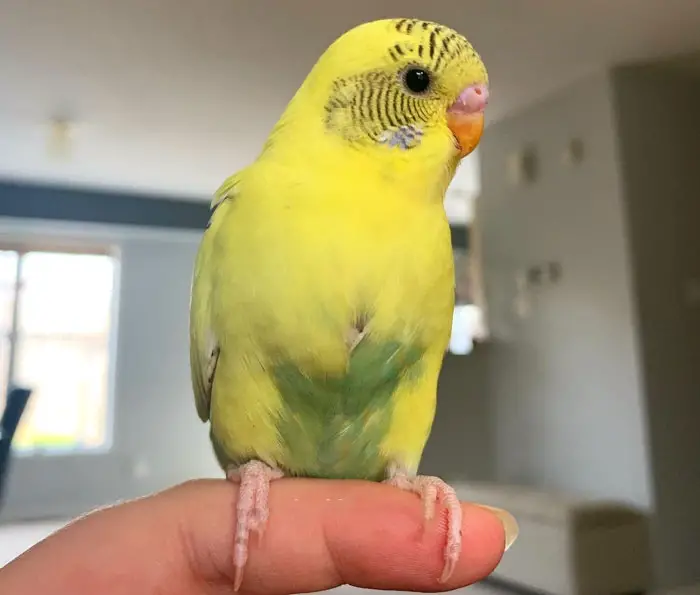
Appearance
Lutino budgies have bright yellow plumage, red or orange eyes, and a yellow beak and feet. They are easy to identify with their solid yellow appearance, often with a few grey feathers.
Albino budgies have no pigmentation and are entirely white, with pink or red eyes and a white beak. And the Fallow budgies have a washed-out appearance, with pastel feathers, generally creamy looking, and red or brown eyes.
Inheritance of Yellow-Based Mutations
Yellow-based mutations are inherited through sex-linked genes. Male budgies have two different sex chromosomes (ZZ), while female budgies have two of the same (ZW).
If the genetic mutation is on the Z chromosome, the male offspring will develop that trait. If the mutation is on the W chromosome, both male and female offspring will develop the trait
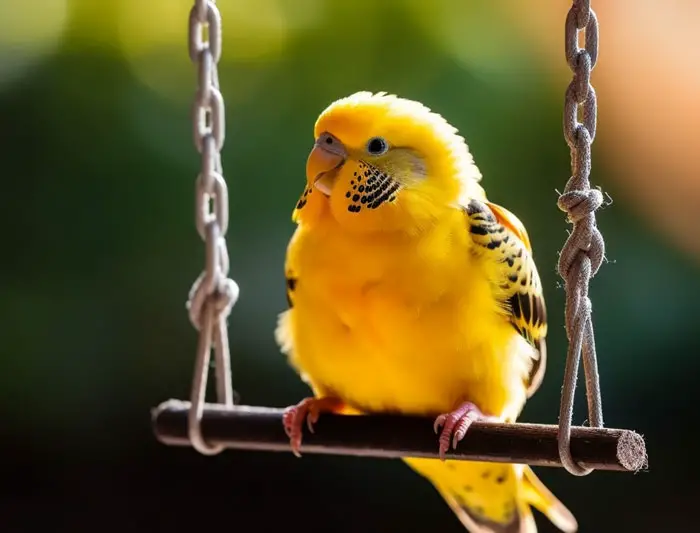
Health Risks
Yellow-based mutations in budgies may include liver disease, which is common in lutino and other yellow-based mutations. These mutations may also be more susceptible to UV damage, and therefore, it is recommended to provide shading from direct sunlight.
Albino budgies may be more sensitive to light because of their lack of pigmentation, which can damage their eyes and feathers. Thus, a healthy diet and clean environment are essential to protect the general health of yellow-based mutated budgies.
Grey Based Mutations
Grey-based mutations in budgies are a range of genetic variations that affect the coloration of the bird’s plumage, often resulting in a grey hue. The most common grey-based mutations in budgies are grey wing, clearwing, dilute, and cinnamon.
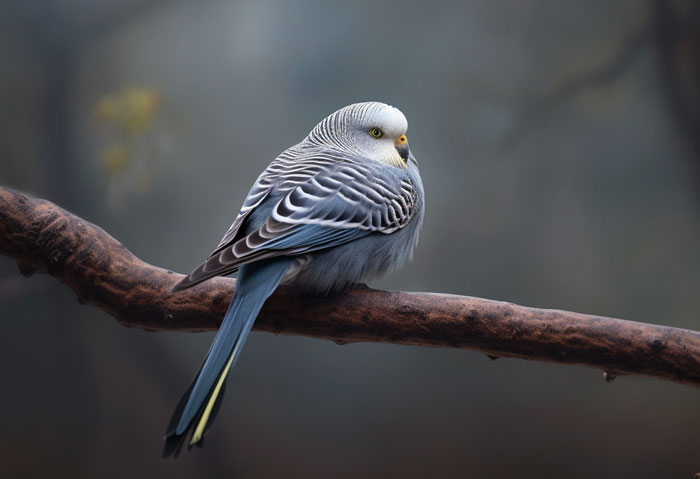
Appearance
Greywing budgies have a soft, pastel appearance with lighter grey-blue body color. The feathers near their head are more transparent than the body feathers.
Clearwing budgies have a similar body color to wild-type budgies, but their wing feathers have a clear appearance.
And Dilute budgies are characterized by a light, milky-grey body color, and their wingtips and tail feathers have a brighter hue than the rest of the feathers.
Cinnamon budgies, on the other hand, have a warm, brown-grey body coloration, and their flight feathers and tail feathers are deep cinnamon.
Inheritance of Grey-Based Mutations
Grey-based mutations in budgies are inherited through sex-linked genes. Males have one Z and one W chromosome, while females have two Z chromosomes.
This means that if the genetic mutation is located on the Z chromosome, the male offspring will inherit the mutation. The female offspring will inherit it only if both of their chromosomes have the trait.
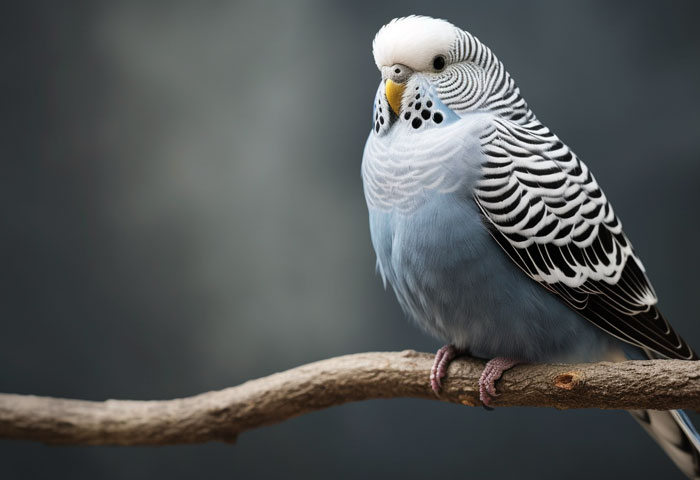
Health Risks
Grey-based mutations in budgies can result in various health issues, depending on the specific mutation that the bird has inherited. These health issues can include feather plucking, dehydration, and malnourishment.
- Feather plucking is a common health issue in budgies with grey-based mutations. This issue can arise due to various factors, such as boredom, stress, illness, or nutritional deficiencies.
- It can cause significant health problems for the bird, including skin irritation, infections, and even loss of feathers.
- Dehydration and associated problems are also observed in these budgies. Owners should ensure that their budgies have access to clean, fresh water at all times and monitor their water intake.
- Malnourishment is a significant concern for all avian genetics, particularly for those with grey-based mutations. These birds may require additional nutrients to maintain good health, such as vitamin A and calcium.
Hence, owners should provide their budgies with a balanced diet that includes a variety of fruits,
Other Mutations
Apart from some specific mutations, several other mutations can create unique color variations in budgies. Some of the most common mutations that do not fit into other categories include cinnamon, dark-eyed clear, and opaline.
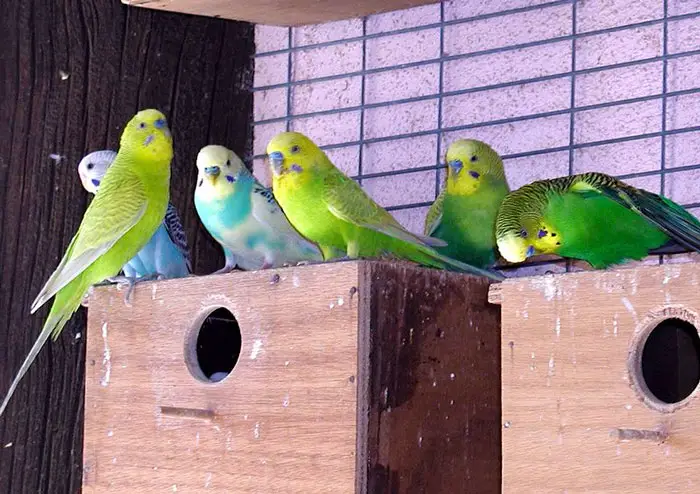
Appearance
Cinnamon budgies have a brown color with darker brown markings on their feathers. The color is usually darker on the wings, tail feathers, and head.
Dark-eyed clear budgies have a vibrant turquoise bodies with clear wings and yellow eyes.
Opaline budgies have a white or yellow head with a body that is a mix of blues and greens.
How to Identify Budgie Color Mutations?
Identifying these mutations can be a challenge, particularly for novice breeders or owners. However, closely examining the birds’ physical characteristics, feather patterns, and eye color can help identify these mutations.
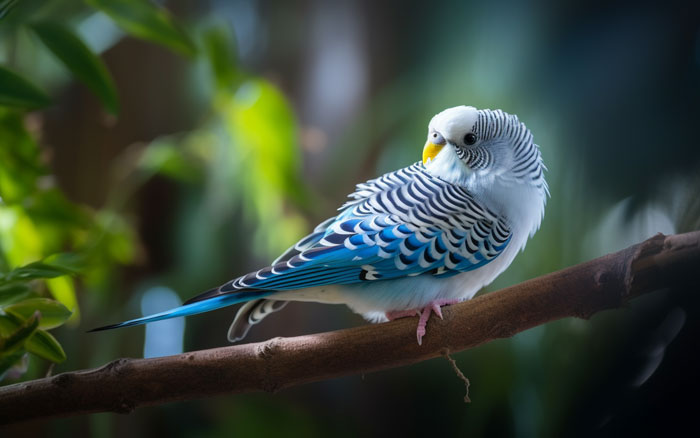
- Cinnamon budgies are characterized by their brown coloration, with darker brown markings on their feathers.
- Dark-eyed clear budgies have turquoise plumage and clear wings.
- Opaline budgies have a mix of blue and green colors on their body.
Inheritance
The mode of inheritance of these mutations can vary, and they can be inherited dominantly or recessively. Understanding the genetics behind these mutations is essential for breeders to produce the desired traits in the birds.
Genetic mutations play a crucial role in the expression of traits and are passed down through generations.
Health Risks
Common health issues related to these mutations are similar to those seen in other budgies. A proper diet, a healthy living environment, and regular visits to a veterinarian can prevent the occurrence of health issues.
FAQs
No. Budgies cannot change color. The color of a budgie’s feathers can change over time due to different factors, such as aging or molting. However, the bird’s genetic coloration will generally remain the same throughout its life.
Budgies’ gender can be determined by their care, which is the fleshy area above their beak. In general, males have blue or purplish ceres, while females have brown, beige, or white ceres. However, this can vary depending on the budgie’s age, health, and color mutation.
Yes, budgies can have health issues related to their color mutations. For example, yellow-based mutations may be more susceptible to liver disease. Blue-based mutations may have a higher risk of feather cysts.
Budgie breeders use Mendelian inheritance patterns to predict the traits that will be passed down to offspring. By understanding which traits are dominant or recessive, breeders can selectively breed budgies with desirable traits to produce offspring
Final Words
In summary, this study has explored various budgie color genetics and their characteristics. We have discussed
- Blue-based mutations and their inheritance pattern
- Green-based mutations, including olive, yellowface, and opaline mutations
- Yellow-based mutations such as lutino, albino, and fallow were also discussed, along with their identifying features, inheritance patterns, and potential health risks
It is essential to understand the inheritance patterns of budgie color mutations. Thus, it will help make informed decisions regarding bird breeding and pet ownership.
By knowing which mutations are recessive or dominant, breeders can predict the likelihood of their offspring inheriting certain traits. Moreover, understanding the potential health risks associated with certain mutations can help pet owners provide appropriate care to their birds.
Further research can be conducted to explore the genetic budgie breeding and environmental factors that influence budgie color mutations.
Lastly, by understanding the genetics of budgie mutations, pet owners can make breeding pairs more effectively and reduce the risk of undesirable mutations.
